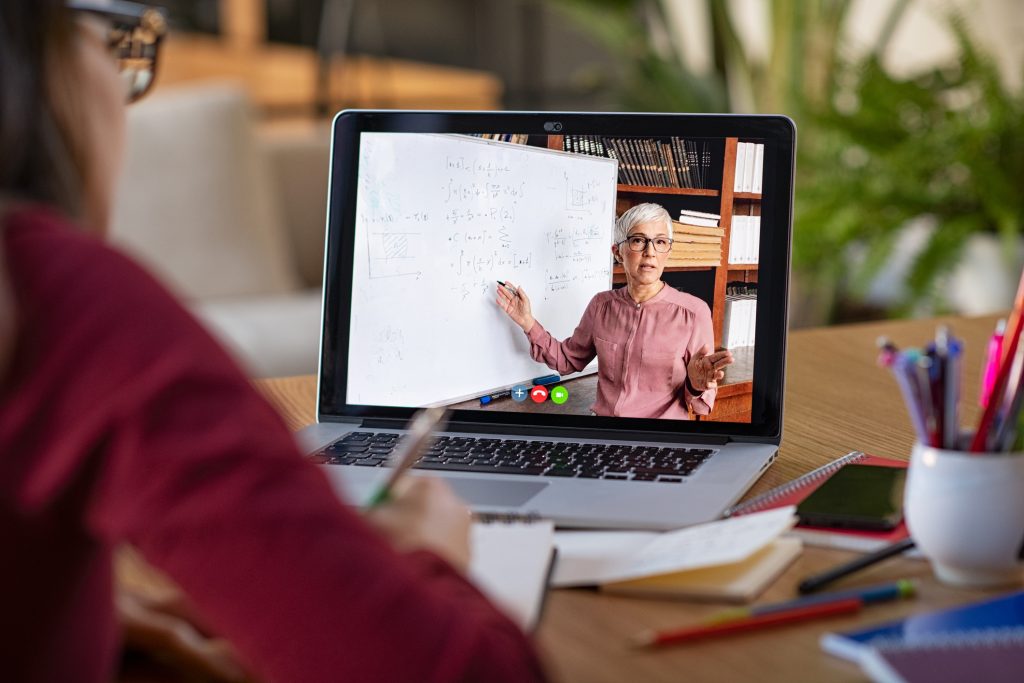Scaling Success for Community College Students in Ohio
Community college teachers across Ohio will hone their online teaching skills in 2021 through ACUE’s 25-week program focused on online college instruction, thanks to a collaboration between the Ohio Association of Community Colleges (OACC) and the Association of College and University Educators (ACUE).
Beginning the week of Jan. 11, 168 faculty members from 22 Ohio community colleges dove into the program, Effective Online Teaching Practices, through which they are learning about and implementing a comprehensive body of evidence-based teaching practices shown to improve student achievement and close equity gaps. ACUE programs in effective teaching practices are based on more than three decades of research that demonstrates effective teaching improves learning for all students.
“Our mission is to support Ohio’s community colleges, ensuring students get the education they need to ensure rewarding, successful future careers,” said Laura Rittner, executive director of the Success Center for Ohio Community Colleges. “To that end, we face an urgent need to prepare our faculty through professional development in online instruction. The response to our call for program applications was so strong that we expanded the program to offer more seats.”
The opportunity is offered free of charge to faculty through a partnership between ACUE, the nonprofit Achieving the Dream, and the OACC’s Success Center.
“It’s an honor to be able to partner with the Ohio Association of Community Colleges and help faculty strengthen their online teaching skills,” said Jonathan Gyurko, president and co-founder of ACUE. “Together with the Success Center, we’re helping college students persist and engage in their studies, learn more deeply and graduate fully prepared for rewarding careers and meaningful lives.”
Equity-promoting teaching practices are among the hundreds of recommended approaches that faculty learn about and develop in ACUE courses, as demonstrated in ACUE’s Inclusive and Equitable Teaching Curriculum Crosswalk.
Jack Hershey, president and chief executive officer of the OACC, said the training will teach faculty ways to keep their online courses fresh, interesting and impactful by using technology and other resources. Each participant will be part of a faculty learning community sharing experiences, learning from each other and bouncing ideas off of one another during the course.
Faculty will be teaching classes at their colleges while taking the course, so they can use what they learn immediately. Those who complete the program requirements will earn the ACUE Certificate in Effective College Instruction, awarded in collaboration with the American Council on Education (ACE).
“We are working hard to better engage students in their learning and to level the playing field to close equity gaps among Ohio students,” Hershey said. “Offering this course to faculty is one more way to do that.”
Since 2012, the Success Center has been a leading member of the Student Success Center Network (SSCN). Managed by Jobs for the Future, the SSCN works to scale proven practices to help more students earn credentials that lead to good jobs. The Success Center’s partnership with ACUE is offered as part of the Every Learner Everywhere (ELE) initiative and was made possible by Achieving the Dream (ATD), an Every Learner Everywhere network partner.
The OACC represents the presidents and trustees of the state’s 23 public two-year institutions that work to advance community colleges through policy advocacy and professional development. For more information, please visit OhioCommunityColleges.org.

 For Steven Mintz, a leading educational innovator and award-winning teacher and author, it takes a coordinated team of well-trained teaching assistants and interactive courseware that he’s been developing for years. The transition to online learning in Mintz’s self-described “mega class”–an introduction to history at the University of Texas at Austin–came with many challenges, and also some silver linings.
For Steven Mintz, a leading educational innovator and award-winning teacher and author, it takes a coordinated team of well-trained teaching assistants and interactive courseware that he’s been developing for years. The transition to online learning in Mintz’s self-described “mega class”–an introduction to history at the University of Texas at Austin–came with many challenges, and also some silver linings.







